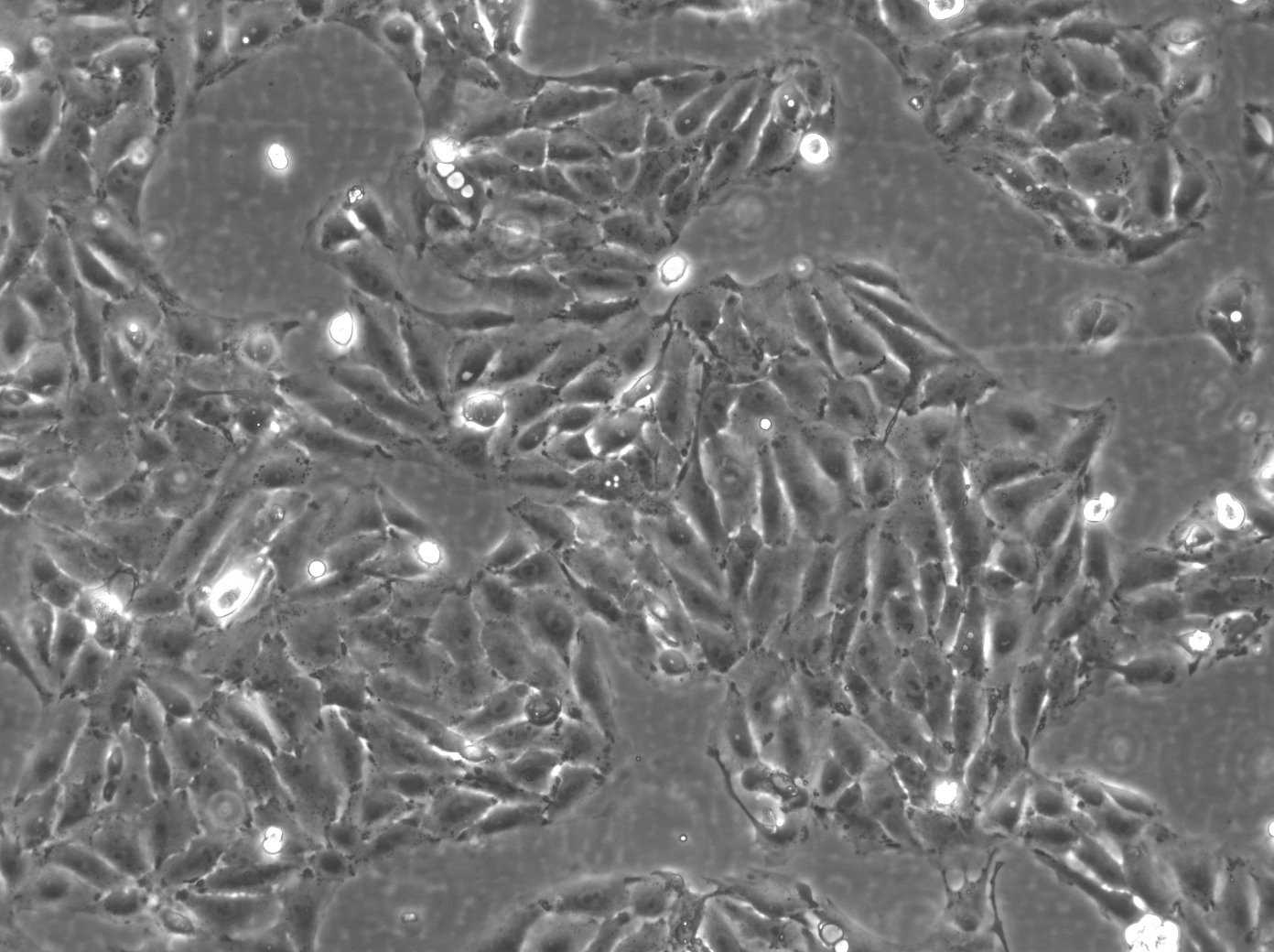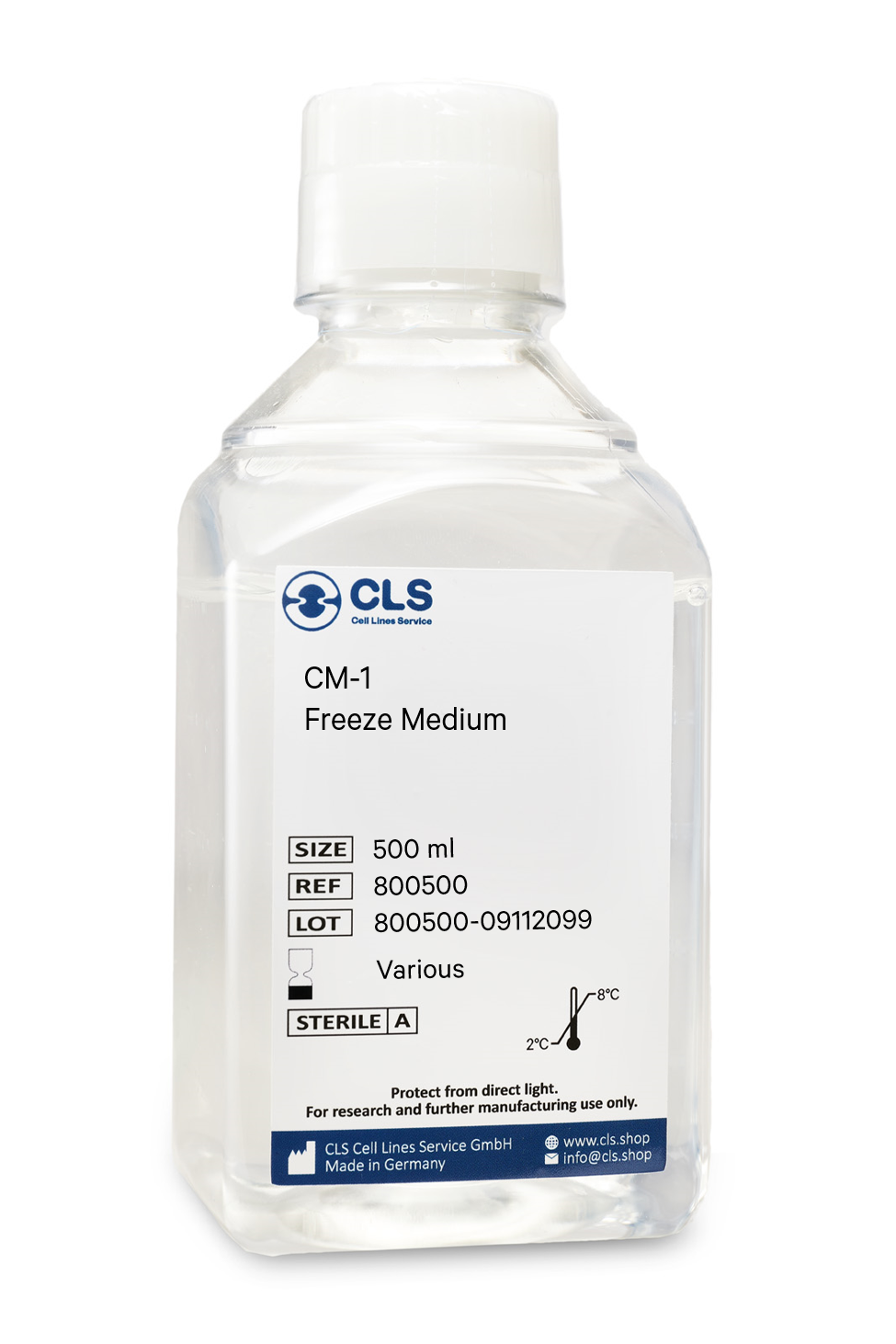PK-15 Cells












Exploring swine fever virus interaction with PK-15 cells
| Description | The PK(15) cell line, derived from PK-2A, a cell line obtained from the kidney of an adult pig in 1955, is infected with the porcine type-C oncovirus, also known as the porcine endogenous retrovirus (PERV). The host cell genome contains 62 copies of the pol gene, which codes for reverse transcriptase and other proteins. Initially, the virus particles produced by PK(15) were found to be defective and unable to infect various mammalian cell lines, including a human cell line. However, subsequent studies demonstrated that human 293 cells could be productively infected by the cell-free supernatant from PK(15) cells. Polymerase chain reaction (PCR) analyses showed that the transmitted viruses belonged to the polytropic subtypes PERV-A and PERV-B. Furthermore, it was observed that the virus particles produced by the 293 cells were resistant to inactivation by the human complement system. In addition to its virological significance, the PK(15) cell line also serves specific applications as a suitable transfection host. With its adherent growth properties, the PK(15) cell line proves valuable in various research and experimental settings. |
|---|---|
| Organism | Pig |
| Tissue | Kidney |
| Synonyms | PK(15), PK (15), PK 15, PK15, Porcine Kidney-15 |
Details of the porcine circovirus cells PK-15
| Age | Adult |
|---|---|
| Gender | Male |
| Morphology | Epithelial-like |
| Growth properties | Monolayer, adherent |
Documentation
| Citation | PK-15 (Cytion catalog number 607426) |
|---|---|
| Biosafety level | 2 |
Genomic profile of the PK15 cell line
| Viruses | PCV1 (Porcine circovirus 1) positive, PCV2 negative, PCV3 negative |
|---|---|
| Virus susceptibility | Hog cholera, African swine fever, vesicular exanthema of swine, foot and mouth disease (FMDV), vesicular stomatitis (Indiana), vaccinia, reovirus 2, 3, adenovirus 4, 5, coxsackievirus B2, B3, B4, B5, B6 |
| Virus resistance | Poliovirus 2 |
| Reverse transcriptase | Positive |
Handling
| Culture Medium | EMEM, w: 2 mM L-Glutamine, w: 1.5 g/L NaHCO3, w: EBSS, w: 1 mM Sodium pyruvate, w: NEAA (Cytion article number 820100c) |
|---|---|
| Medium supplements | Supplement the medium with 10% FBS |
| Passaging solution | Accutase |
| Subculturing | Remove the old medium from the adherent cells and wash them with PBS that lacks calcium and magnesium. For T25 flasks, use 3-5 ml of PBS, and for T75 flasks, use 5-10 ml. Then, cover the cells completely with Accutase, using 1-2 ml for T25 flasks and 2.5 ml for T75 flasks. Let the cells incubate at room temperature for 8-10 minutes to detach them. After incubation, gently mix the cells with 10 ml of medium to resuspend them, then centrifuge at 300xg for 3 minutes. Discard the supernatant, resuspend the cells in fresh medium, and transfer them into new flasks that already contain fresh medium. |
| Split ratio | A ratio of 1:2 to 1:4 is recommended |
| Seeding density | 2 x 10^4 cells/cm^2 |
| Fluid renewal | 2 to 3 times per week |
| Freezing recovery | Allow the cells to recover from the freezing process for at least 24 to 48 hours. |
| Freeze medium | CM-1 (Cytion catalog number 800100) or CM-ACF (Cytion catalog number 806100) |
| Handling of cryopreserved cultures |
|
Quality control
| Sterility | Mycoplasma contamination is excluded using both PCR-based assays and luminescence-based mycoplasma detection methods. To ensure there is no bacterial, fungal, or yeast contamination, cell cultures are subjected to daily visual inspections. |
|---|---|
| STR profile |
Amelogenin: x,x
|
Required products
In biological research, the cryopreservation of mammalian cells is an invaluable tool. Successful preservation of cells is a top priority given that losing a cell line to contamination or improper storage conditions leads to lost time and money, ultimately delaying research results. Once the cells have been transferred from a cell growth medium to a freezing medium, the cells are typically frozen at a regulated rate and stored in liquid nitrogen vapor or at below -130°C in a mechanical deep freezer. The freeze medium CM-1 enables cryopreservation of cells at below -130°C (or in liquid nitrogen), essentially eliminating the need for an additional, costly ultralow freezer and eliminating time-consuming and demanding controlled rate freezing processes. Simply collect the cells, aspirate the growth medium, resuspend in CM-1, transfer to a cryovial, and store the vial at below -130 °C.
Long shelf-life
CM-1 is a serum-containing, ready-to-use cryopreservation medium that can be stored in the refrigerator for up to one year.
Trusted by hundreds of researchers
Our advanced cell freezing medium CM-1 is a market-leading product in Germany and Europe and is distinguished by numerous publications involving hundreds of different cell lines worldwide. We tested it with more than 1000 cell lines from our proprietary cell bank.
Optimized ingredients
CM-1 does contain serum products. Serum-containing cryopreservation mediums optimally protect the cells whilst being frozen and have the advantage of high recovery rates. As CM-1 has been tested with a multitude of cell lines, you can rest assured that your cells always recover well.
Contains FBS, DMSO, glucose, salts
Buffering capacity pH = 7.2 to 7.6
Applications & Validation
The cells preserved in our CM-1 freeze medium can be used for cell counting, viability and cryopreservation, cell culture, mammalian cell culture, gene expression analysis and genotyping, in vitro transcription, and polymerase chain reactions. Each batch's efficacy is evaluated using CHO-K1 cells. Each batch is tested for pH, osmolality, sterility, and endotoxins to ensure high quality.
This EMEM medium consists of 2 mM L-Glutamine, 1.5 g/L NaHCO3, EBSS, 1 mM Sodium pyruvate, and NEAA.
What's in EMEM?
EMEM is a modified version of Eagle's minimum essential medium, containing Earle's Balanced Salt Solution, non-essential amino acids, L-glutamine, sodium pyruvate, and sodium bicarbonate. It's important to note that this reduced level of sodium bicarbonate (NaHCO3, 1.5 g/L) is intended for use in 5% CO2 in the air. To maintain its effectiveness, storing the medium at two °C to 8°C in the dark when not in use is recommended.
What is EMEM used for?
Eagle's minimal essential medium (EMEM) is a cell culture medium that can maintain cells in tissue culture. The medium contains higher concentrations of amino acids, allowing for a more accurate approximation of the protein composition of cultured mammalian cells. EMEM may be used to cultivate various cells, including fibroblasts, human liver cancer cell line (HepG2) cells and human fetal brain progenitor-derived astrocyte cells (PDA). It is typically used in the presence of fetal bovine serum (FBS), calf, or horse sera.
How is EMEM different from other cell culture media?
While EMEM and Dulbecco's modified Eagle's medium (DMEM) share some similarities, they also differ. Both media lack protein and contain the amino acids, salts, glucose, and vitamins required to provide a cell with energy and maintain it in tissue culture. However, the DMEM formulation is modified to contain up to four times more vitamins and amino acids and two to four times more glucose than EMEM. It's worth noting that EMEM is also different from the original MEM formulation.
Quality control
pH = 7.2 +/
- 0.02 at 20-25°C.
Each lot has been tested for sterility and absence of mycoplasma and bacteria.
Maintenance
Keep refrigerated at +2°C to +8°C in the dark. Freezing and warming up to +37° C minimize the quality of the product.
Do not heat the medium to more than 37° C or use uncontrollable sources of heat (e.g., microwave appliances).
If only a part of the medium is to be used, remove this amount from the bottle and warm it up at room temperature.
Shelf life for any medium except for the basic medium is 8 weeks from the date of manufacture.
Composition
Components
mg/L
Inorganic Salts
Calcium chloride x 2H2O
264,92
Magnesium sulfate
97,67
Potassium chloride
400,00
Sodium chloride
6,800.00
Sodium dihydrogen phosphate x H2O
140,00
Other Components
D(+)-Glucose
1,000.00
Phenol red
10,00
Sodium pyruvate
110,00
NaHCO3
1,500.00
Amino Acids
L-Alanine
8,90
L-Arginine x HCl
126,00
L-Asparagine x H2O
13,20
L-Aspartic acid
13,30
L-Cystine
24,00
L-Glutamine
292,30
L-Glutamic acid
14,70
Glycine
7,50
L-Histidine x HCl x H2O
42,00
L-Isoleucine
52,00
L-Leucine
52,00
L-Lysine x HCl
72,50
L-Methionine
15,00
L-Phenylalanine
32,00
L-Proline
11,50
L-Serine
10,50
L-Threonine
48,00
L-Tryptophan
10,00
L-Tyrosine
36,00
L-Valine
46,00
Vitamins
D-Calcium pantothenate
1,00
Choline chloride
1,00
Folic acid
1,00
myo-Inositol
2,00
Nicotinamide
1,00
Pyridoxal x HCl
1,00
Riboflavin
0,10
Thiamine x HCl
1,00
Phosphate-buffered saline (PBS) is a versatile buffer solution used in many biological and chemical applications, as well as tissue processing. Our PBS solution is formulated with high-quality ingredients to ensure a constant pH during experiments. The osmolarity and ion concentrations of our PBS solution are matched to those of the human body, making it isotonic and non-toxic to most cells.
Composition of our PBS Solution
Our PBS solution is a pH-adjusted blend of ultrapure-grade phosphate buffers and saline solutions. At a 1X working concentration, it contains 137 mM NaCl, 2.7 mM KCl, 8 mM Na2HPO4, and 2 mM KH2PO4. We have chosen this composition based on CSHL protocols and Molecular cloning by Sambrook, which are well-established standards in the research community.
Applications of our PBS Solution
Our PBS solution is ideal for a wide range of applications in biological research. Its isotonic and non-toxic properties make it perfect for substance dilution and cell container rinsing. Our PBS solution with EDTA can also be used to disengage attached and clumped cells. However, it is important to note that divalent metals such as zinc cannot be added to PBS as this may result in precipitation. In such cases, Good's buffers are recommended. Moreover, our PBS solution has been shown to be an acceptable alternative to viral transport medium for the transport and storage of RNA viruses, such as SARS-CoV-2.
Storage of our PBS Solution
Our PBS solution can be stored at room temperature, making it easy to use and access.
To sum up
In summary, our PBS solution is an essential component in many biological and chemical experiments. Its isotonic and non-toxic properties make it suitable for numerous applications, from cell culture to viral transport medium. By choosing our high-quality PBS solution, researchers can optimize their experiments and ensure accurate and reliable results.
Composition
Components
mg/L
Inorganic Salts
Potassium chloride
200,00
Potassium dihydrogen phosphate
200,00
Sodium chloride
8,000.00
di-Sodium hydrogen phosphate anhydrous
1,150.00



